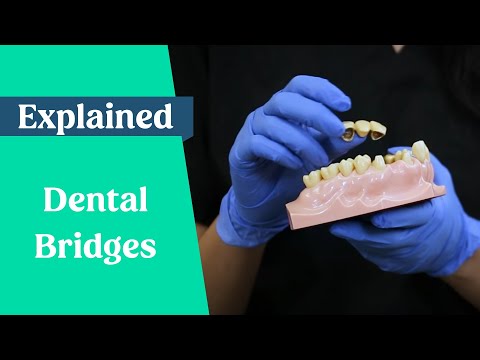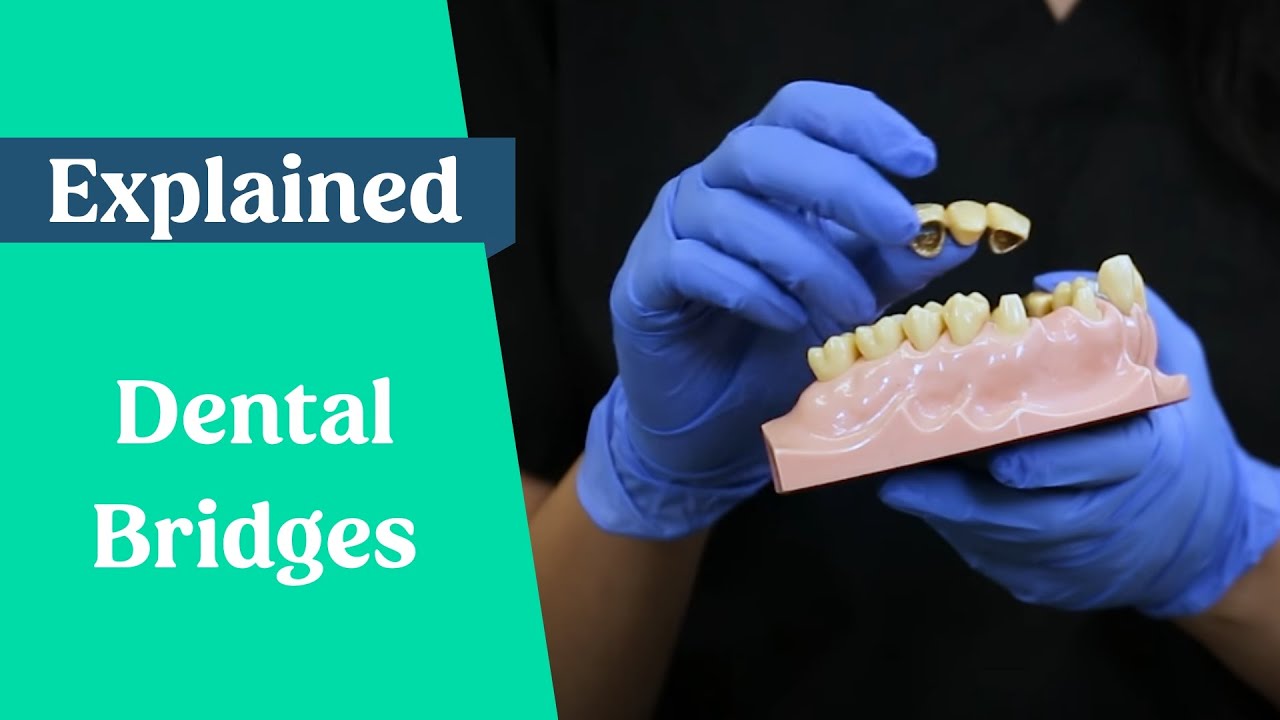Bridgework is a fascinating dental procedure that can transform your smile and enhance your overall oral health. This innovative technique involves the use of bridges to replace missing teeth, providing a natural and seamless appearance. By restoring gaps caused by tooth loss, bridgework not only improves your aesthetic appeal but also improves the functionality of your teeth and jaw. Whether you have lost a tooth due to injury, decay, or other dental issues, bridgework offers a reliable solution that is both durable and long-lasting. One of the most appealing aspects of bridgework is its ability to blend seamlessly with your existing teeth, ensuring a harmonious smile. The custom-made bridges are crafted to match the color, shape, and size of your natural teeth, making them virtually indistinguishable. This means that you can confidently show off your beautiful smile without anyone suspecting that you have undergone dental treatment. Furthermore, bridgework provides stability and prevents the surrounding teeth from shifting into the empty space left by a missing tooth. By anchoring the bridge to the adjacent healthy teeth or dental implants, this procedure ensures that your teeth remain properly aligned, preventing potential bite problems and jaw discomfort. Overall, bridgework is an excellent option for individuals seeking to restore their smile’s beauty and functionality. With its ability to provide a seamless and natural-looking solution, bridgework can boost your confidence and improve your oral health. Consult with a qualified dentist to explore whether bridgework is the right dental treatment for you.

What is Bridgework?
| Component | Description |
|---|---|
| Framework | A rigid structure made of metal or porcelain that supports the artificial teeth in a dental bridge. It is custom-made to fit the patient’s mouth and is designed to provide stability and strength to the bridge. |
| Abutment Teeth | The healthy, natural teeth on either side of the missing tooth gap that serve as anchors for the bridge. These teeth are prepared and crowned to provide support for the artificial teeth, effectively bridging the gap left by the missing tooth/teeth. |
| Pontic | The artificial tooth or teeth that replace the missing tooth/teeth. These prosthetic teeth are carefully shaped and colored to blend seamlessly with the patient’s natural teeth, ensuring an aesthetically pleasing and functional restoration. |
| Retention Mechanism | The mechanism that holds the bridge in place, preventing it from moving or dislodging during normal oral functions. This can include various methods such as dental cement, screws, or precision attachments, depending on the specific needs of the patient. |
| Biocompatible Materials | Bridgework is typically made using high-quality materials that are safe for oral use and compatible with the patient’s body. These materials can include dental alloys, porcelain, or a combination of both, providing durability and an aesthetically pleasing appearance. |
Title: “Reviving Smiles: A Brief Guide to Dental Bridges” In this section, we’ll explore dental bridges, a remarkable alternative to false teeth that can bring back that radiant smile.
Understanding Bridgework: Restoring Smiles and Functionality
When it comes to dental restorations, bridgework is a common solution that can help replace missing teeth and restore your smile. Whether you have lost one tooth or several, a dental bridge can provide a permanent and natural-looking solution. In this article, we will explore what bridgework is, how it works, and its benefits.
What is Bridgework?
Bridgework is a dental restoration that is used to replace one or more missing teeth. It consists of a false tooth, known as a pontic, which is supported by adjacent teeth or dental implants. The pontic is custom-made to match the color, shape, and size of your natural teeth, ensuring a seamless blend with your existing smile.
How Does Bridgework Work?
Before the bridgework procedure, your dentist will examine your mouth and determine if you are a good candidate for this restoration. If you have healthy teeth on either side of the gap, they will be prepared by removing a small amount of enamel to make room for the dental crowns that will support the pontic.
Next, your dentist will take impressions of your teeth to create a mold for the bridge. This ensures that the pontic and crowns are precisely fabricated to fit your unique mouth shape. While waiting for the permanent bridge to be created, a temporary bridge will be placed to protect your exposed teeth and gums.
During the final appointment, the permanent bridge will be carefully placed and adjusted to achieve a comfortable fit. Your dentist will check your bite and make any necessary modifications to ensure proper functionality. Once the bridge is securely in place, you can enjoy a fully restored smile.
The Benefits of Bridgework
Bridgework offers several advantages for individuals with missing teeth:
1. Improved Appearance
A dental bridge not only fills the gap left by missing teeth but also enhances your overall facial aesthetics. With a customized bridge, you can enjoy a natural-looking smile that boosts your confidence and self-esteem.
2. Enhanced Chewing and Speaking Ability
Missing teeth can make it difficult to eat certain foods and may affect your ability to speak clearly. Bridgework restores the functionality of your teeth, allowing you to chew comfortably and speak without impediments.
3. Maintaining Facial Structure
When a tooth is missing, the surrounding teeth may shift and cause changes in your facial structure. A dental bridge helps maintain the integrity of your facial contours, preventing sagging and preserving your youthful appearance.
4. Preventing Teeth Misalignment
If you have a gap between your teeth, the adjacent teeth may start to shift and become misaligned over time. A dental bridge fills the space and prevents neighboring teeth from moving, helping to maintain proper tooth alignment.
5. Long-Lasting Solution
Bridgework is a durable dental restoration that can last for many years with proper care. By practicing good oral hygiene habits and visiting your dentist regularly, you can ensure the longevity of your bridge and enjoy a functional smile for a lifetime.
Conclusion
Bridgework is a reliable and effective solution for replacing missing teeth and restoring both the functionality and appearance of your smile. By understanding how bridgework works and its benefits, you can make an informed decision about whether it is the right option for you. If you are considering bridgework, consult with your dentist to determine the best course of action and regain your confidence in your smile.
What is Bridgework?
- Bridgework is a dental restoration procedure that replaces one or more missing teeth.
- A dental bridge is a false tooth, known as a pontic, which is supported by adjacent natural teeth or dental implants.
- The adjacent teeth, called abutments, serve as anchors to hold the bridge in place.
- Bridges can be made from various materials, including porcelain, metal, or a combination of both.
- The procedure involves preparing the abutment teeth by removing a portion of their enamel to create space for the bridge.
- Impressions of the prepared teeth are taken to fabricate a custom-made bridge in a dental laboratory.
- During the fabrication period, a temporary bridge may be placed to protect the exposed teeth and gums.
- Once the final bridge is ready, it is cemented onto the abutment teeth, restoring the appearance and function of the missing teeth.
- Bridges can improve chewing and speaking abilities, prevent adjacent teeth from shifting, and enhance the overall aesthetics of the smile.
- Proper oral hygiene, including regular brushing and flossing, is crucial to maintain the health and longevity of a dental bridge.

